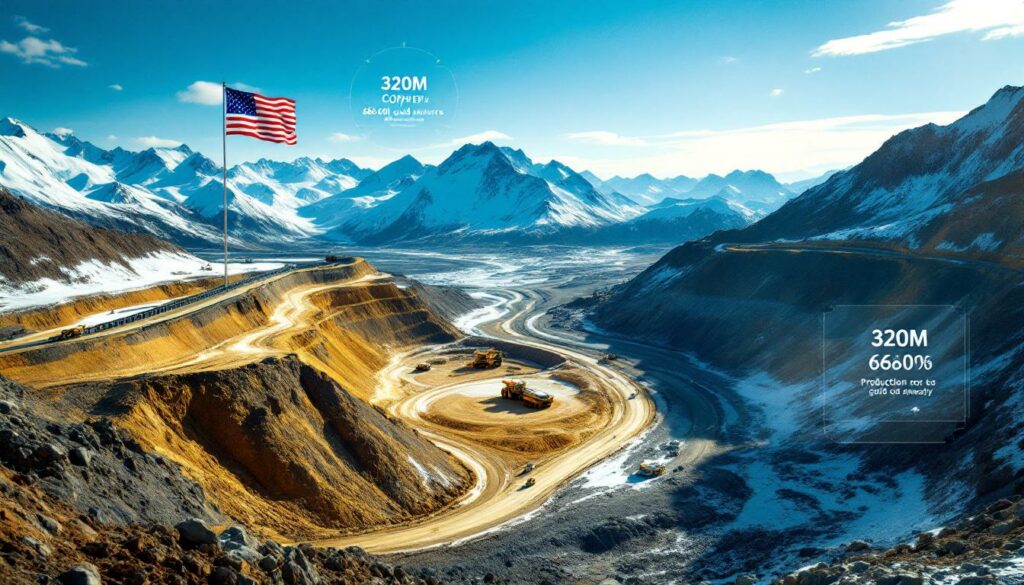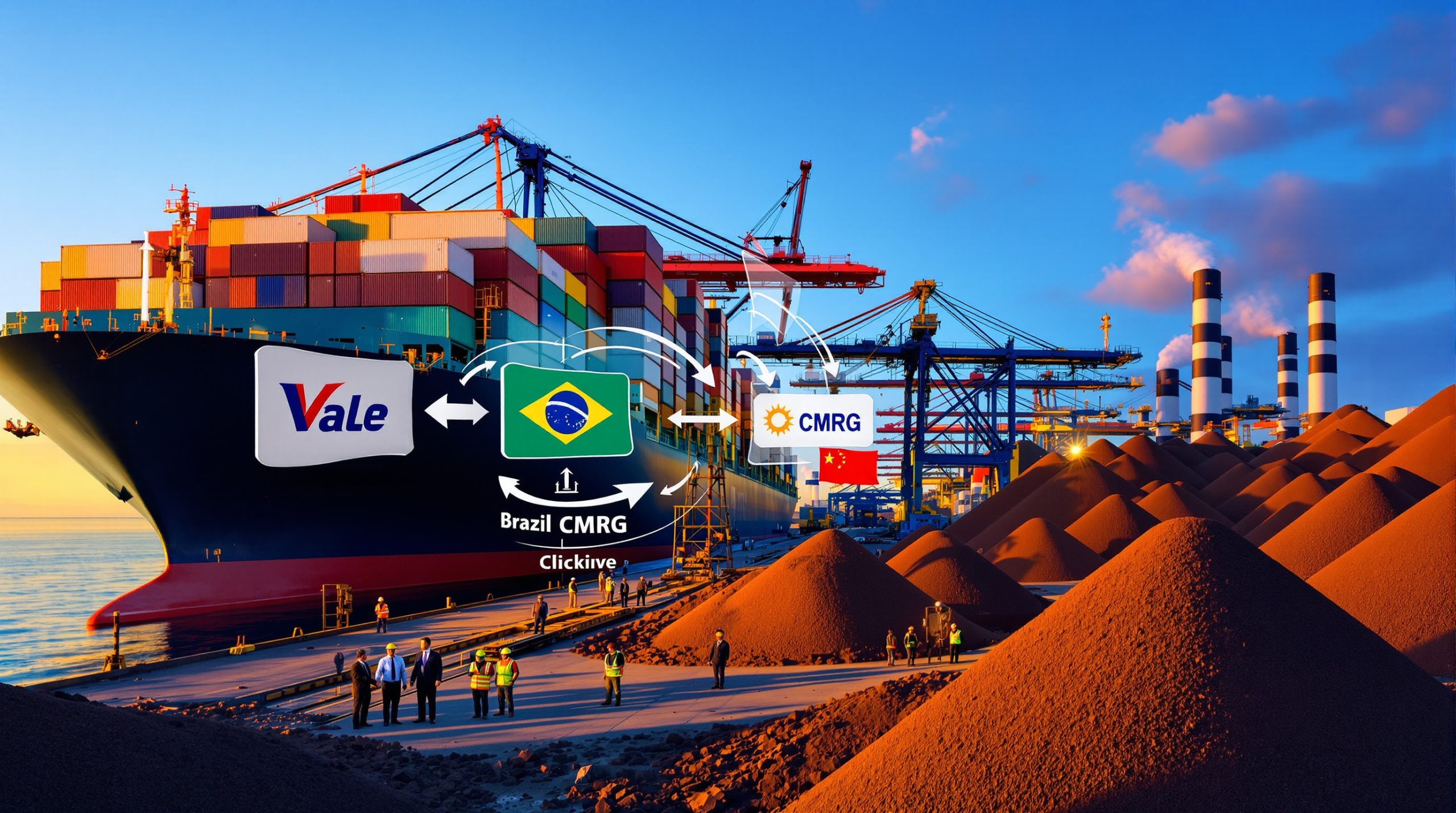What is the Pebble Project?
The Pebble copper-gold project represents one of North America's largest undeveloped mineral resources, strategically located in southwest Alaska at coordinates 59°43' N, 155°19' W. This world-class polymetallic deposit contains exceptional concentrations of copper, gold, molybdenum, silver, and rhenium within a porphyry system, positioning it as a potentially crucial source of critical minerals for the United States.
The deposit was initially discovered in 1987 and has undergone extensive exploration and development planning in the decades since. What makes Pebble particularly significant is its massive scale combined with its location within U.S. borders, offering potential domestic supply of minerals currently imported from overseas sources. Understanding the mineral exploration importance is crucial when assessing projects of this magnitude.
Project Ownership and Management
Northern Dynasty Minerals, a Vancouver-based resource development company, controls the project through its wholly-owned subsidiary Pebble Limited Partnership (PLP). This corporate structure allows focused management of this complex project while the parent company maintains full ownership.
PLP has assembled a team of mining professionals, environmental scientists, and community relations specialists to navigate the intricate regulatory landscape while advancing development plans. The company has invested over $1 billion in exploration, environmental studies, and project planning since taking control of the property.
What Resources Does the Pebble Deposit Contain?
The Pebble deposit stands out not only for its size but also for its remarkable mineral diversity. Few global deposits contain such significant quantities of five different metals in economically viable concentrations.
Mineral Resource Estimates
According to the comprehensive 2023 Preliminary Economic Assessment (PEA), the Pebble deposit contains:
- Copper with an average grade of 0.41%
- Gold at 0.34 grams per tonne
- Molybdenum at economically significant concentrations
- Silver in recoverable quantities
- Rhenium in rare, commercially viable amounts
These resources would support a 20-year mining operation processing approximately 1.3 billion tons of mineralized material at a remarkably low strip ratio of 0.12:1. This strip ratio—representing the amount of waste rock removed per ton of ore—is significantly lower than many comparable mining operations, contributing to favorable economics.
Production Projections
Based on detailed metallurgical testing and process design, the proposed operation is expected to yield:
- 320 million pounds of copper annually
- 368,000 ounces of gold yearly
- 15 million pounds of molybdenum per year
- 1.8 million ounces of silver annually
- 10,000 kilograms of rhenium yearly
The rhenium production is particularly noteworthy, as it would establish Pebble as one of the United States' primary domestic sources of this ultra-rare metal, essential for high-temperature applications in aerospace and defense industries. Furthermore, latest gold price analysis suggests continued strong market conditions for this precious metal.
Economic Significance
The 2023 PEA presents compelling economic metrics for the project:
- After-tax net present value of $2.23 billion (at a 7% discount rate)
- Internal rate of return of 16.25%
- Estimated payback period of 4.6 years
These financial projections reflect the project's robust fundamentals, even when incorporating stringent environmental protection measures and infrastructure investments. However, analysts note these figures remain sensitive to metal price fluctuations, particularly copper, which constitutes the largest revenue component.
How Would the Pebble Project Be Developed?
The development approach for Pebble has evolved significantly over time, with the current plan representing a balance between economic viability and environmental considerations.
Proposed Mining Operations
The 2023 PEA outlines a 180,000 ton-per-day open-pit operation utilizing conventional processing methods to produce two primary concentrates:
- Copper-gold concentrate – shipped to smelters for further refining
- Molybdenum concentrate – containing valuable rhenium content
The processing facility would incorporate state-of-the-art technology to maximize metal recovery while minimizing environmental impacts. The operation would recirculate approximately 165,000 cubic meters of water daily in a closed-loop system, significantly reducing freshwater requirements.
Infrastructure Development
The updated project plan incorporates an 83-mile "southern route" for access infrastructure, representing a significant modification from earlier proposals. This routing decision reflects ongoing efforts to address stakeholder concerns while maintaining project feasibility.
Key infrastructure components include:
- All-weather access road connecting to existing transportation networks
- 230kV transmission line tapping into the regional power grid
- Slurry pipeline system for concentrate transport to a dedicated port facility on Cook Inlet
- Port facilities designed to accommodate bulk carriers while minimizing coastal impact
The infrastructure design incorporates numerous features to protect salmon-spawning habitat at 187 identified stream crossings, including elevated roadways and specialized culvert designs. Details of the project overview provide comprehensive information about the development plans.
Capital Requirements
Initial capital expenditure for the project is estimated at $6.77 billion, covering:
- Design and construction of the mine and processing facilities
- Development of all transportation and energy infrastructure
- Installation of environmental monitoring and protection systems
- Commissioning and startup costs
This substantial investment reflects both the project's scale and the remote location, which necessitates significant infrastructure development beyond the mine site itself.
What Economic Benefits Would the Project Bring?
The Pebble project represents a potential economic catalyst for a region of Alaska that has experienced limited development opportunities.
Job Creation Potential
The project would generate significant employment opportunities at multiple levels:
- 750-1,000 direct jobs for Alaskans during operations
- Approximately 2,000 total jobs when including indirect and induced employment
- Construction-phase employment peaking at around 2,000 positions
- Long-term, high-wage positions averaging 35% above the Alaskan wage average
These jobs would be particularly impactful in the Bristol Bay region, where year-round employment opportunities are limited outside the seasonal fishing industry. The project would include targeted training programs to maximize local hiring from nearby communities.
Regional Economic Impact
Beyond direct employment, the project would generate:
- Estimated $180 million annually in state and local tax revenue
- Significant contracts for Alaskan businesses providing goods and services
- Economic diversification in an area heavily dependent on seasonal activities
- Improved infrastructure benefiting communities beyond the mine
Similar mining projects in Alaska, such as Red Dog Mine in the Northwest Arctic Borough, have demonstrated how resource development can provide sustainable economic foundations for remote regions. Red Dog currently contributes approximately 70% of the Borough's revenue, enabling improved public services and infrastructure.
What is the Current Regulatory Status?
The Pebble project has navigated a complex and evolving regulatory landscape over many years.
EPA and Army Corps of Engineers Processes
The project's regulatory journey has included:
- Initial permit applications under Section 404 of the Clean Water Act
- Environmental Impact Statement (EIS) process through the U.S. Army Corps of Engineers
- EPA review under Section 404(c) authority
- Legal challenges resulting in a Supreme Court remand to the EPA in 2023
The 2023 PEA incorporates updates regarding the Environmental Protection Agency's final determination and the US Army Corps of Engineers' record of decision appeal processes, reflecting this complex regulatory history. Recent critical minerals order may impact how regulatory agencies evaluate projects like Pebble.
Recent Settlement Discussions
As of July 2025, Northern Dynasty and PLP have confirmed engagement in active settlement discussions with the EPA. Court filings dated July 3, 2025, indicate that EPA officials are:
- Actively reviewing previous decisions regarding the project
- Considering new information provided by PLP
- Remaining open to reconsideration of earlier determinations
This development represents a potential turning point in the project's regulatory pathway, suggesting possible resolution of longstanding permitting obstacles.
Next Steps in Regulatory Process
The parties are working to finalize the scope of additional materials that PLP will submit to support the EPA's reconsideration process. A status update is expected by July 17, 2025, following a 14-day extension of the current abeyance granted by the court.
Industry observers note that the settlement process could establish precedents for other Arctic resource projects facing similar regulatory challenges. The outcome may provide clearer guidance on balancing resource development with environmental protection in sensitive ecosystems.
What Environmental Considerations Are Being Addressed?
Environmental protection has been central to Pebble's project planning, reflecting both regulatory requirements and stakeholder concerns about the region's ecological values.
Environmental Protection Measures
The project design incorporates numerous environmental safeguards:
- Water Management: Closed-loop water recycling systems to minimize freshwater use and eliminate discharge to salmon-bearing streams
- Tailings Storage: Geosynthetic-lined facilities designed to modern standards with comprehensive leak-detection systems
- Fisheries Protection: Special engineering for 187 stream crossings to protect salmon spawning habitat
- Carbon Management: Plans to offset the estimated 6.2 million tons of CO₂ equivalent annual emissions through carbon credit programs
- Monitoring Programs: Comprehensive environmental monitoring before, during, and after operations
These measures reflect a recognition of the region's significant ecosystem services, particularly:
- Regulating services provided by wetlands that control flooding and filter water
- Provisioning services from fisheries that support commercial and subsistence activities
- Cultural services tied to traditional uses and indigenous heritage values
Stakeholder Engagement
Northern Dynasty and PLP have conducted extensive consultation with:
- Local communities in the Bristol Bay region
- Alaska Native tribal entities with traditional ties to the area
- Commercial and subsistence fishing interests
- Conservation organizations and regulatory agencies
This engagement process has influenced numerous aspects of project design, most notably the selection of the "southern route" for access infrastructure to minimize impacts on sensitive habitats and traditional use areas.
Regulatory Compliance Strategy
The ongoing settlement discussions with the EPA suggest a potential path forward that could address regulatory concerns while allowing the project to advance under appropriate environmental protections and oversight. Key aspects of this approach include:
- Commitment to exceeding minimum regulatory requirements
- Adaptive management approach allowing modifications based on monitoring results
- Substantial financial assurance (estimated at $1.2 billion) for eventual reclamation
- Integration of traditional ecological knowledge into environmental management plans
Advanced mine reclamation innovation will be essential for the project's long-term environmental success.
How Does Pebble Fit into U.S. Critical Minerals Strategy?
The Pebble project has taken on additional significance in recent years as the United States has focused more attention on securing domestic supplies of critical minerals.
Strategic Resource Significance
The deposit contains substantial quantities of metals designated as critical to U.S. economic and national security:
- Copper: Essential for renewable energy, electrification, and communications infrastructure
- Molybdenum: Critical for high-strength steel alloys used in defense and infrastructure
- Rhenium: Ultra-rare metal crucial for jet engines and other high-temperature applications
Current U.S. import dependencies for these metals highlight the strategic value of domestic sources:
- Copper: 37% imported (USGS 2023 data)
- Molybdenum: Significant net importer despite some domestic production
- Rhenium: Nearly 100% import-dependent
Domestic Supply Chain Implications
Development of the Pebble resource could:
- Reduce U.S. dependence on foreign sources for these critical minerals by up to 5% for copper alone
- Strengthen supply chain resilience against geopolitical disruptions
- Create domestic processing capabilities for specialized metals like rhenium
- Establish Alaska as a more significant contributor to U.S. mineral security
The project's location within U.S. borders ensures that production would meet domestic environmental and labor standards, avoiding the "offshoring" of environmental impacts to jurisdictions with weaker protections.
Energy Transition Relevance
Copper, in particular, plays a vital role in technologies essential to the global energy transition. Recent copper price insights highlight the growing demand for this metal in green technologies:
| Technology | Copper Requirement | Pebble's Potential Contribution |
|---|---|---|
| Electric Vehicle | 183 lbs per vehicle | Annual production could supply ~3.5 million EVs |
| Wind Turbine (3MW) | 4.7 tons per turbine | Annual production could supply ~30,000 turbines |
| Solar Power | 5.5 tons per MW | Annual production could supply ~13,000 MW of capacity |
| Grid Infrastructure | Massive requirements for transmission | Significant contribution to grid modernization |
Pebble's copper resources could therefore contribute significantly to meeting growing demand for this crucial metal as the world transitions to low-carbon energy systems.
FAQ About the Pebble Project
What is the current timeline for project development?
While specific start and completion dates have not been publicly announced, the project's advancement depends largely on the outcome of ongoing regulatory processes, particularly the settlement discussions with the EPA. Industry experience suggests that permitting for major U.S. mining projects typically takes 7-10 years, with construction requiring an additional 3-5 years once permits are secured.
How has the project plan evolved over time?
The project has undergone significant modifications in response to stakeholder feedback and regulatory requirements. Key changes include:
- Reduction in overall footprint compared to early concepts
- Elimination of plans to develop the entire resource base
- Adoption of the "southern route" for access infrastructure
- Enhanced water management and fisheries protection measures
- More comprehensive reclamation and closure planning
The 2023 PEA represents the most current iteration, featuring these improvements while maintaining economic viability.
What are the main challenges facing the project?
Regulatory hurdles, particularly related to environmental permitting, represent the primary challenges. Other significant considerations include:
- Capital requirements in an era of increased mining development costs
- Technical challenges of operating in a remote location with harsh climate
- Addressing concerns of stakeholders with diverse interests and perspectives
- Managing public perception and securing social license to operate
The current settlement discussions with the EPA may provide a pathway to address the most immediate regulatory issues.
How might the project impact local communities?
Beyond employment opportunities, the project would:
- Generate tax revenue for local governments supporting public services
- Potentially fund infrastructure improvements benefiting communities
- Create business opportunities for local contractors and suppliers
- Establish year-round economic activity in a region dominated by seasonal industries
The company has proposed community benefit agreements to ensure tangible advantages for nearby villages, though specific terms would be finalized as the project advances.
What happens after the mine closes?
The project includes comprehensive closure and reclamation planning, with financial assurance (estimated at $1.2 billion) set aside to ensure proper implementation regardless of the company's future financial status. Post-mining land use would be determined through consultation with stakeholders, with possibilities including wetland restoration, recreational areas, and wildlife habitat.
Disclaimer: This article contains forecasts and analyses based on current information. Future regulatory decisions, market conditions, metal prices, and technological developments may significantly affect project viability, timeline, and economic impacts. Readers should consider this information as preliminary and subject to change as the project advances through regulatory processes.
Ready to Capitalise on the Next Major Mineral Discovery?
Stay ahead of the market with Discovery Alert's proprietary Discovery IQ model, which instantly notifies investors of significant ASX mineral discoveries like those that transformed companies such as De Grey Mining. Visit our discoveries page to understand how historic mineral discoveries have generated substantial returns and begin your 30-day free trial today.




